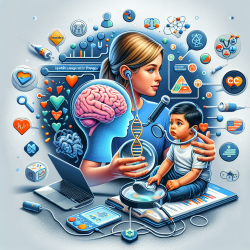The field of pediatric psychiatry is continuously evolving with technological advancements, and one such promising development is the use of emotional modulation models to identify developmental disorders in children. This approach, discussed in the research article "An emotional modulation model as signature for the identification of children developmental disorders," offers a novel way to enhance diagnostic accuracy by focusing on how children modulate their emotional responses during speech.
The Need for Innovative Diagnostic Tools
Developmental disorders such as Autism Spectrum Disorder (ASD) and Specific Language Impairment (SLI) present unique challenges due to their heterogeneous nature. Traditional diagnostic methods often struggle with variability in symptoms and expression among individuals. This is where emotional modulation models come into play, offering a personalized approach to diagnosis.
Understanding Emotional Modulation Models
The concept revolves around analyzing how children modulate their emotional responses through speech. Instead of relying solely on acoustic features, which can be inconsistent markers of developmental disorders, this method focuses on the Emotional Modulation Function (EMF). The EMF quantifies how individuals alter their voice to express emotions, providing insights into atypical behaviors indicative of developmental disorders.
Research Findings and Implications
The research applied this novel paradigm to the French Child Pathological & Emotional Speech Database, achieving an accuracy of 0.79 in distinguishing between typically developing (TD) and developmentally disordered (DD) children. Notably, the model excelled in recognizing language impairments and autism disorder with accuracies of 0.92 and 0.82, respectively.
This approach not only improves diagnostic precision but also opens avenues for personalized therapeutic interventions. By understanding each child's unique emotional modulation patterns, practitioners can tailor strategies that align with individual needs.
Encouraging Further Research
The potential applications of emotional modulation models extend beyond diagnostics. They offer a framework for exploring emotional expression across various communicative acts, including audio-visual and physiological cues. As researchers continue to refine these models, there is a significant opportunity to expand their use across different contexts and populations.
Practitioners are encouraged to delve deeper into this research area, exploring how these models can be integrated into clinical practice to enhance outcomes for children with developmental disorders.
To read the original research paper, please follow this link: An emotional modulation model as signature for the identification of children developmental disorders.










